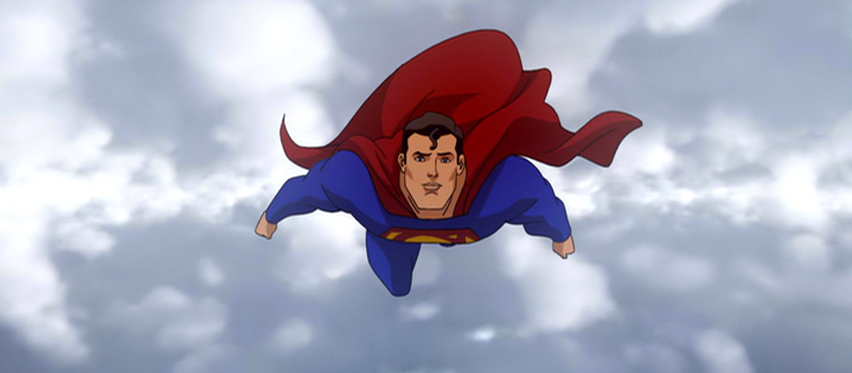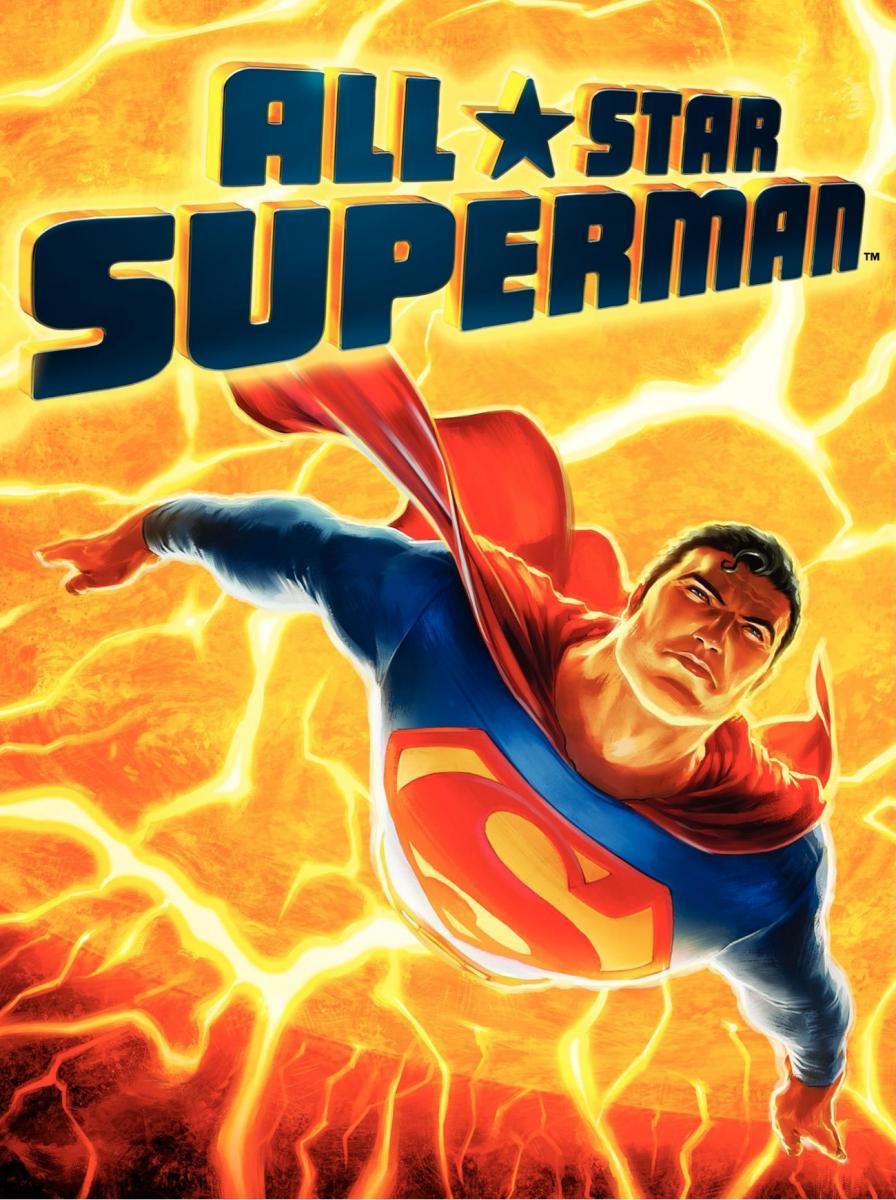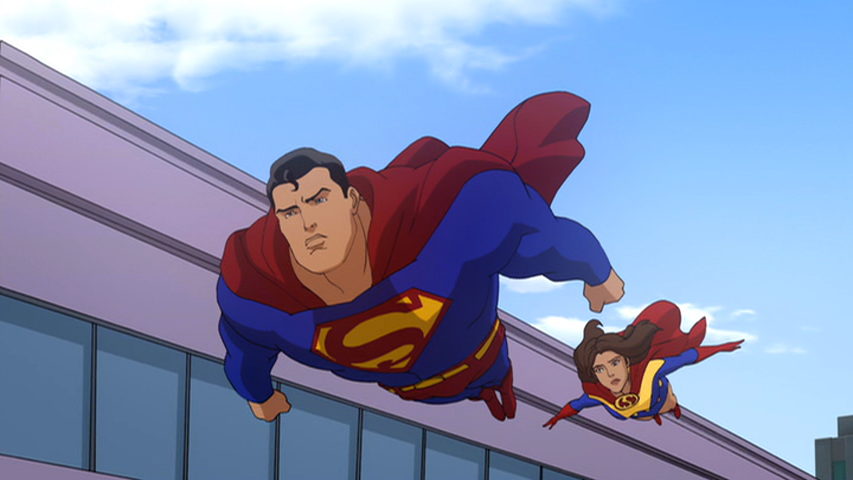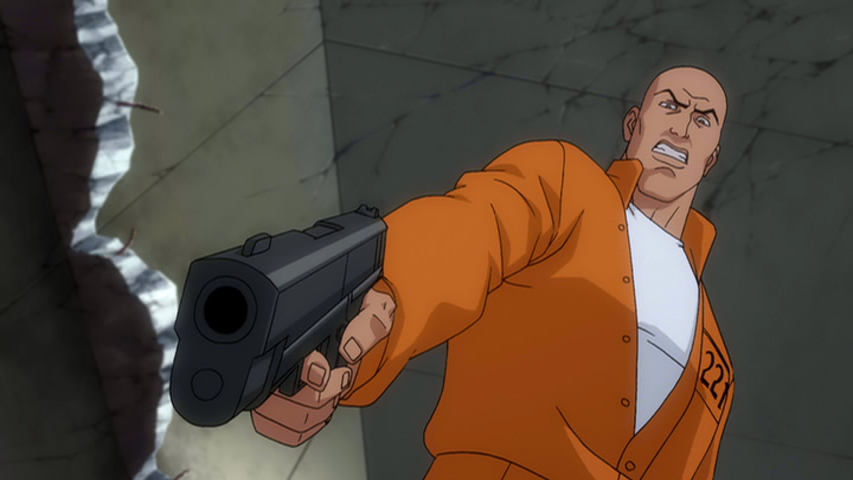

“I saw everything. I saw how to save the world. I could have made everyone see.”
The All-Star imprint was a short-lived series of out-of-continuity stories of DC’s biggest characters. Frank Miller wrote All Star Batman & Robin, the Boy Wonder while Grant Morrison was given the reigns to All-Star Superman. Morrison’s career is chock-full of wild comics series that seem almost unadaptable, from reboots of once-popular series like Doom Patrol, JLA, and The New X-Men to zany, mind-bending originals like The Invisibles. Teaming up with frequent collaborator Frank Quitely, Morrison set to work on a story of Superman’s last days. The 12-issue series was a hit, and was quickly commissioned for adaptation, led by director Sam Liu and producer Bruce Timm (well known for the Batman, Superman, and Justice League animated series for DC).
The death of Superman is a good hook,1 one that anyone passingly familiar with the Man of Steel would be intrigued by. The film is largely faithful to Morrison’s story which tries to grasp the entirety of Superman’s history. As with any adaptation, things that work in one medium don’t always translate well to another, and the film’s success or failure rides not only on the quality of the source material, but on the choices made by the filmmakers. To that end, writer Dwayne McDuffie’s work is mostly good. He cuts the dross, makes thoughtful additions where they’re necessary, and pieces things together in a way that allows them to work in film in a way that a panel-for-panel copy of the comic would not have.

Morrison’s story really isn’t concise enough to be streamlined down to a 76 minute film. Like most superhero comics, you have to give writers a lot of leeway to shape the story world so that characters that are theoretically overmatched or underpowered can still fit into the a superhero lineup with their peers. You can’t expect a universe in which every little detail fits together. All that to say that the plot, involving super hero serums, sun-eating creatures, and gravity guns, is expectedly outlandish. In the opening scenes, Lex Luthor sabotages a space exploration mission in order to trick Superman into flying too close to the sun. This causes Superman to contract solar radiation—a condition that drastically increases his powers but slowly begins to kill him. Since we’re out of continuity, as Superman’s death approaches he chooses to do things that he otherwise wouldn’t, like reveal himself to Lois and make uneasy peace with Luthor.
A few major subplots from the comic series hit the cutting room floor, including a run-in with Superman regular Bizarro, Jimmy Olsen injecting himself with a drug that temporarily turns him into Doomsday to fight a rogue Superman, and several more esoteric and meta elements that Morrison toys with regularly.2 Surprisingly though, Clark’s final visit with his adoptive father was cut, as was a scene in which Superman rescues a suicidal teen.

Two subplots made the cut that I believe should have been jettisoned in favor of the two mentioned above. The inclusions of Bar-El and Lilo—two Kryptonian astronauts who had been lost in space—and Atlas and Samson, who challenge Superman for the affections of Lois. Both feel like they are here because they provide action sequences. If the choice was between Pa Kent and Bar-El, the scene in which Superman contemplates his own mortality while bidding a final farewell to his aging human father would have been much more emotionally resonant.
The voice acting is mostly very good. Anthony LaPaglia and Christina Hendricks (Firefly, Mad Men) are great as Lex Luthor and Lois Lane, while the voice of Superman (James Denton) is the only prominent one that didn’t feel quite right. But Denton’s voicing of Clark Kent—who is large and clumsy like Christopher Reeve’s portrayal in Superman and its sequels—is spot on.
It’s a good film that pulls from much of what we’ve come to know about Superman throughout the years. Though it constrains Morrison’s story due to the brief runtime, it is still a fun watch.
1. The Death of Superman was a popular story arc in the early 1990s that was adapted into the animated feature Superman: Doomsday (2007) and again as the two-part The Death of Superman (2018) and The Reign of the Supermen (2019). The live-action Batman v Superman: Dawn of Justice (2016) also drew inspiration from the arc.
2. Considering the film is likely to be shown on children’s television channels, this is probably a good decision.